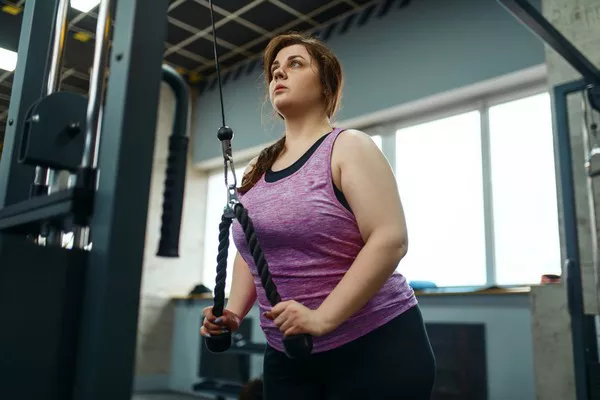Strength training is a cornerstone of fitness, promoting not only muscular strength but also overall health. One key aspect often debated in fitness circles is the duration of a strength training session. In this comprehensive exploration, we delve into the nuances of strength training sessions, uncovering the ideal duration backed by scientific principles and practical considerations.
Understanding Strength Training: Beyond Reps and Sets
Defining the Essence of Strength Training Sessions:
Strength training involves resistance exercises designed to enhance muscular strength and endurance. It goes beyond the mere lifting of weights, encompassing a strategic combination of reps, sets, and exercises targeting specific muscle groups.
The Role of Progressive Overload:
At the core of effective strength training is the principle of progressive overload. This entails gradually increasing the resistance to challenge the muscles, prompting them to adapt and grow stronger over time. Understanding this foundational concept is vital for structuring optimal training sessions.
Individual Variability
Recognizing Individual Differences:
Individuals vary in their fitness levels, goals, and preferences. These differences play a significant role in determining the optimal duration of a strength training session. What works for one person may not necessarily be suitable for another, highlighting the need for personalized approaches.
Considering Training Goals:
The specific goals of a strength training program greatly influence session duration. Whether the focus is on muscular endurance, hypertrophy (muscle growth), or maximal strength development, each goal requires a nuanced approach to training duration.
Scientific Insights
Duration and Intensity:
Scientific studies delve into the relationship between session duration and training intensity. Striking a balance is crucial, as excessively long sessions may lead to fatigue and compromised performance, while overly short sessions may limit the stimulus needed for optimal gains.
Impact on Hormonal Response:
Hormonal responses, particularly cortisol and testosterone, play a role in the adaptation process during strength training. Understanding how session duration influences these hormonal dynamics provides insights into the potential benefits and drawbacks of different training lengths.
Practical Considerations
Warm-up and Mobility:
The duration of a strength training session extends beyond the actual lifting of weights. Adequate time devoted to warm-up and mobility exercises is crucial for preparing the body, reducing injury risk, and optimizing the effectiveness of subsequent exercises.
Exercise Selection and Variation:
The choice and variety of exercises impact session duration. Prioritizing compound movements that engage multiple muscle groups efficiently can maximize gains without extending the overall time commitment. Quality of execution often outweighs sheer quantity.
Session Components
Reps, Sets, and Rest Intervals:
Breaking down a strength training session involves understanding the components of reps, sets, and rest intervals. Optimal combinations of these elements contribute to a well-structured training block, influencing both the effectiveness and duration of the session.
Frequency of Training:
The overall frequency of strength training sessions throughout the week is a critical factor in designing an effective program. Balancing session duration with weekly frequency is essential for providing the necessary stimulus while allowing for adequate recovery.
Individual Training Phases
Strength Phase:
During a strength phase, the emphasis is on lifting heavier weights with lower rep ranges. This specific focus impacts the session duration, as longer rest intervals between sets are often required to optimize performance and recovery.
Hypertrophy Phase:
In a hypertrophy-focused phase, the objective is to induce muscle growth through moderate weights and higher rep ranges. This phase may involve a different approach to session duration, incorporating a balance between volume and intensity.
Monitoring and Adjusting
Listening to the Body:
The body provides signals that can guide the adjustment of training duration. Signs of overtraining, excessive fatigue, or lack of progress may indicate the need to reassess and modify the duration and intensity of strength training sessions.
Periodization:
Periodization involves strategically varying training variables, including session duration, over time. This approach prevents plateaus, minimizes the risk of overtraining, and optimizes long-term performance and gains.
Mitigating Common Challenges
Balancing Time Constraints:
Many individuals face time constraints when it comes to exercise. Strategies such as high-intensity interval training (HIIT) or incorporating supersets and circuit training can offer efficient alternatives without compromising the effectiveness of a strength training session.
Home Workouts and Equipment Accessibility:
The availability of equipment and the setting of the workout, whether at home or in a gym, can influence the structure and duration of a strength training session. Adapting to different environments allows for flexibility in designing effective workouts.
Conclusion
In conclusion, the ideal duration of a strength training session is not a one-size-fits-all concept but rather a dynamic and individualized consideration. Balancing scientific insights, practical considerations, and the unique needs of each individual is key to crafting sessions that are both effective and sustainable. Whether aiming for strength, hypertrophy, or endurance, the art and science of strength training sessions involve an ongoing process of adaptation, fine-tuning, and listening to the body for long-term success and optimal health.
[inline_related_posts title=”You Might Be Interested In” title_align=”left” style=”list” number=”6″ align=”none” ids=”3215,3213,3211″ by=”categories” orderby=”rand” order=”DESC” hide_thumb=”no” thumb_right=”no” views=”no” date=”yes” grid_columns=”2″ post_type=”” tax=””]
































